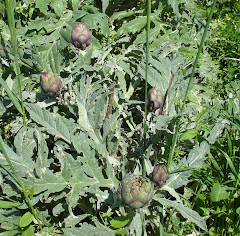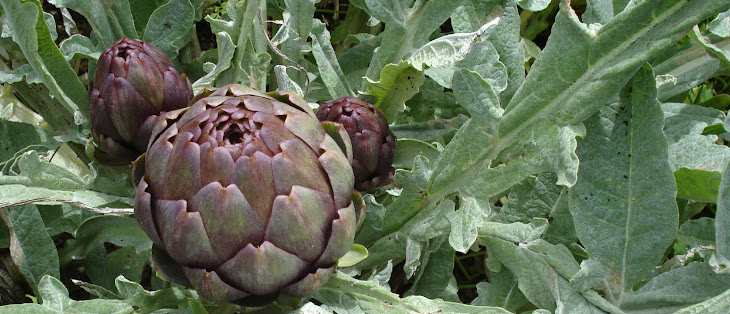One of the good things about writing a garden blog is that I can check back and see how this year compares with last year and the year before. Spring seems to be late this year, but looking back to last February I can see that the apricot buds are at about the same stage this year, although the daffodils are certainly later. Last year we had daffodils in flower in time for St David’s day – that won’t happen this year.
 |  The apricot tree should be in flower in a few days’ time. The apricot tree should be in flower in a few days’ time. |
I sowed some mangetout peas about a month ago and had almost given up hope of the plants appearing. I thought the seeds had been washed away by some of the heavy rain we’ve had and today I decided to sow some more in the same place. Luckily I had a close look first because I noticed that they’re coming up at last. We’ve covered them with chicken wire because the birds seem to like them.
 mangetout peas emerging and, right, the garlic doing well. mangetout peas emerging and, right, the garlic doing well. |  |  But the daffodils are late this year. But the daffodils are late this year. |
We’ve already got two rustic-looking cold frames in the garden, but our neighbour gave us an old window so Lo Jardinièr decided to make another one – they’ll all come in useful when our pepper and cucumber plants need a bit of protection before being planted out. He made a base of sand covered with old terracotta floor tiles, made walls with concrete blocks and rested the window on top – very simple.
 |  |
While he was doing that I sowed another double row of broad beans and a row of spinach. We lost at least three sowings of spinach to heavy rain in the autumn, each time I re-sowed them there would be another storm and no sign of spinach plants, except for a solitary one which has survived the winter. We miss having the young spinach leaves in our salads, so we hope to grow some now before the weather gets too hot and dry.
Today’s harvest:
 |  |
Rosemary, thyme and bay, which the garden provides all through the year, whatever the weather, chard, which is just recovering from the cold weather and starting to grow again, and cabbage.






















































